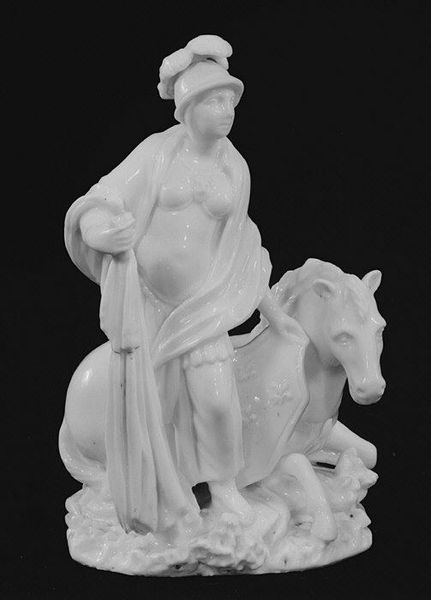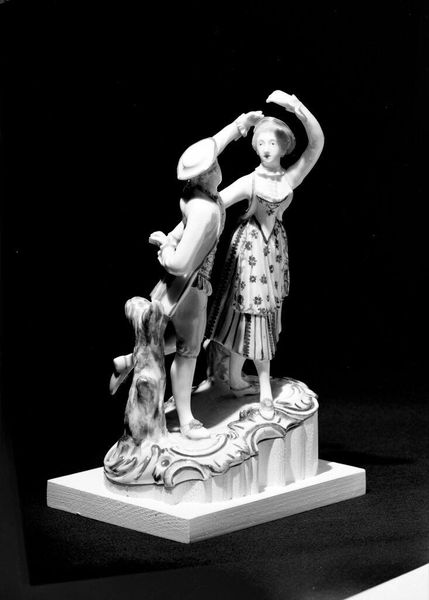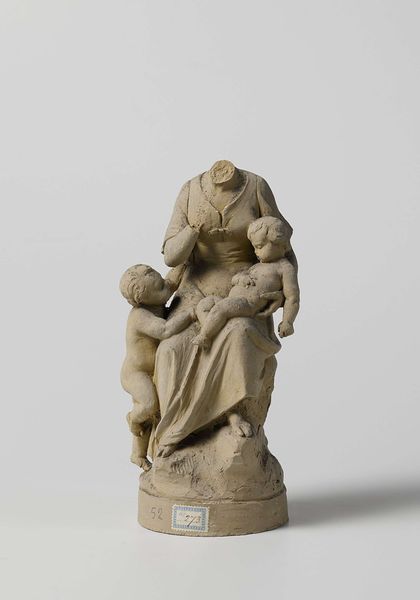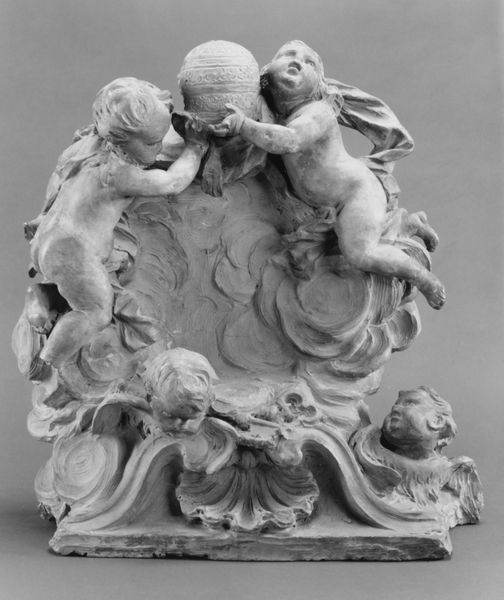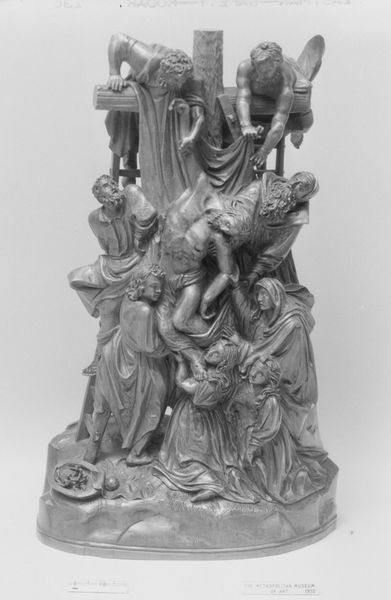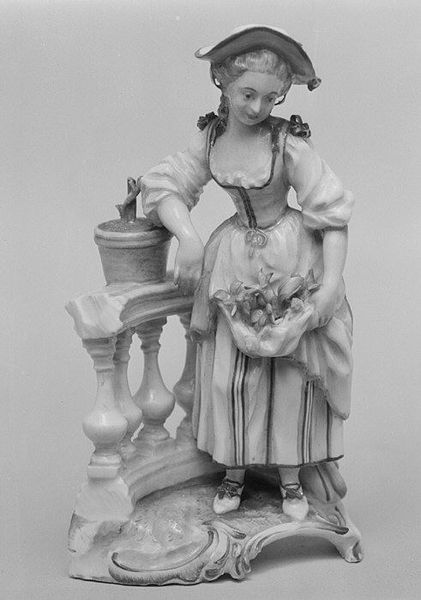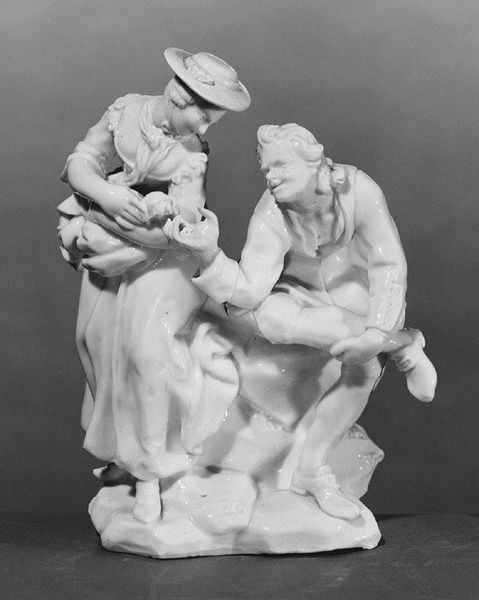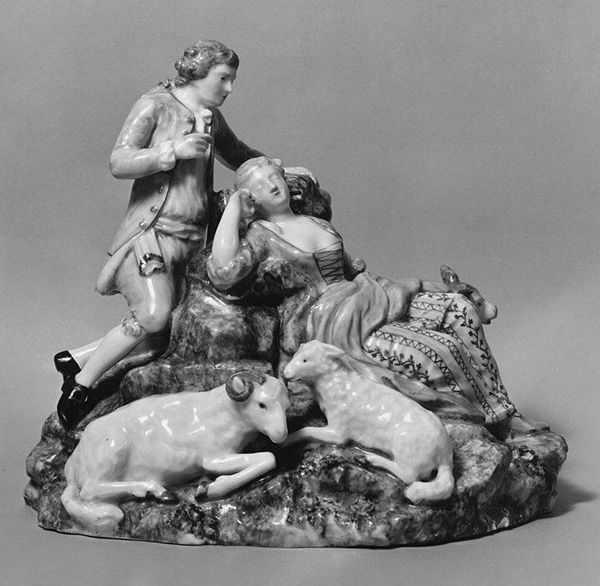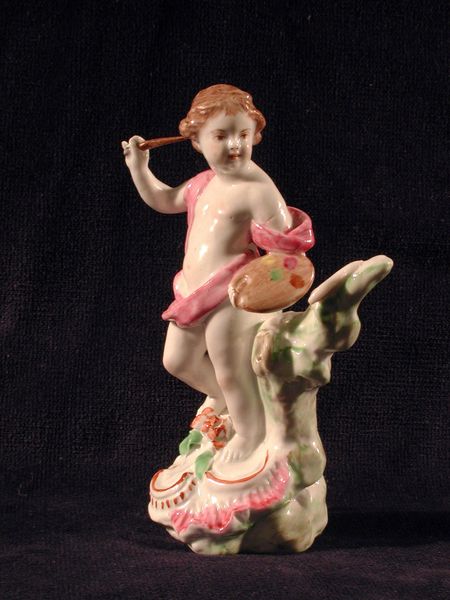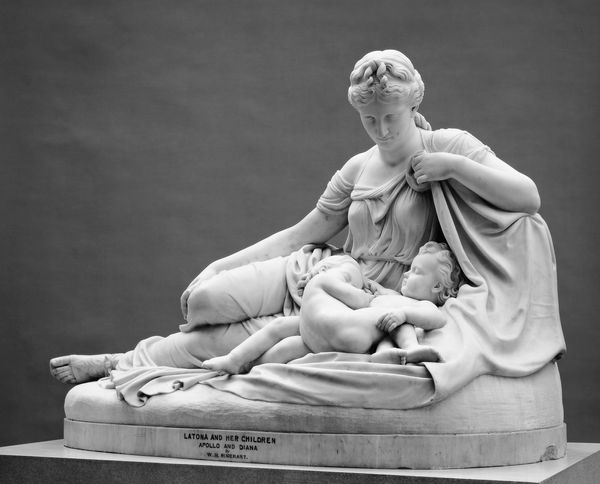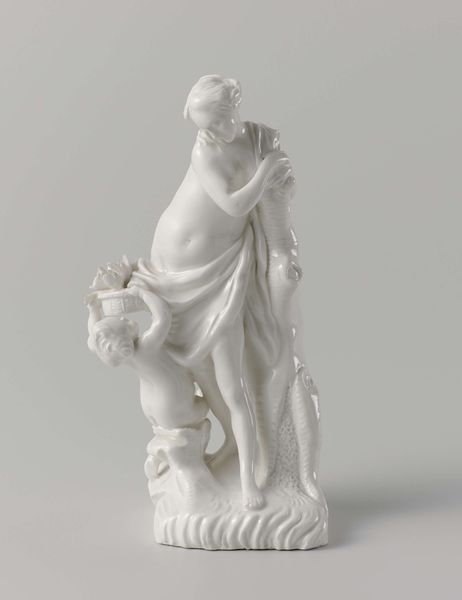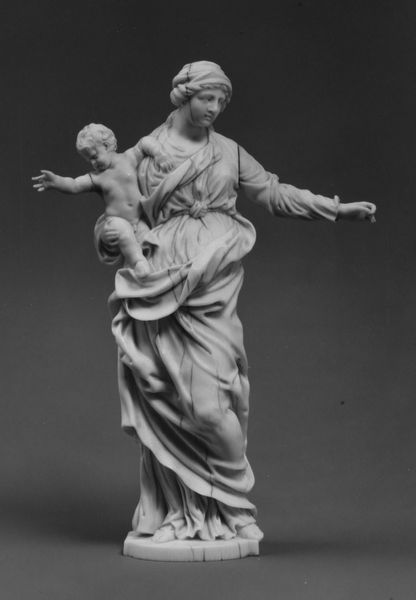
ceramic, porcelain, sculpture
#
sculpture
#
ceramic
#
porcelain
#
figuration
#
sculpture
#
men
#
decorative-art
#
miniature
#
rococo
#
statue
Dimensions: Height: 5 in. (12.7 cm)
Copyright: Public Domain
Curator: Here we have "Asia," a porcelain sculpture created by the Mennecy factory between 1750 and 1765. It’s currently housed here at the Metropolitan Museum of Art. Editor: It's startlingly white. A luminous figurine. There's an interesting play of flowing lines in the drapery against the more static form of the camel, a duality created through contrasting shapes. Curator: This piece is part of a series representing the continents, a common theme in the decorative arts of the 18th century. They speak to Europe's expanding global awareness during that period, and how those cultures were often filtered through a European lens. We have to question what "Asia" meant to its European creators and audience. Editor: Ah, yes, the lens of the other. The surface seems impeccably smooth. Is it meant to evoke purity, an untouched exoticism, through its flawless white porcelain? I’m drawn to how the sculptor captured a moment of elegant repose within the composition. Curator: Perhaps. The figure's posture, her garments, and even the inclusion of the camel—all served to construct a vision of the "Orient," as it was then conceived in Europe. These representations reinforced hierarchies, a Western gaze upon the East, imposing and objectifying. Editor: The details, too, are fascinating. Observe the careful shaping of the woman’s flowing robes, each fold meticulously rendered. And yet, paradoxically, it flattens out under the intense whiteness of the unpainted glaze. Curator: Precisely, and it's crucial to understand that objects like this are not neutral aesthetic creations. They participated in constructing, circulating, and solidifying colonial ideologies. What stories do these objects silently perpetuate? Whose perspectives are missing or actively silenced? Editor: It is remarkable how this single sculpture generates so many layers of interpretation through its composition, material, and historical implications. Curator: Indeed, examining art through such perspectives allows us to understand not just its beauty or technique, but its role in shaping societal norms and power structures.
Comments
No comments
Be the first to comment and join the conversation on the ultimate creative platform.
